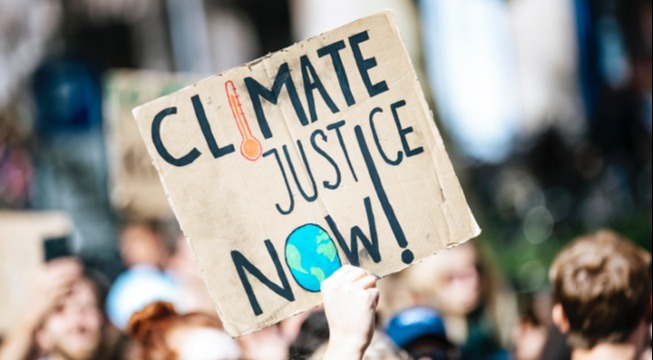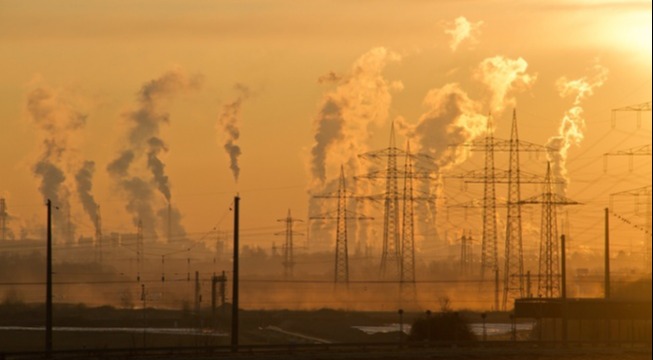 Image courtesy of Markus Spiske.
Image courtesy of Markus Spiske.
“All human beings are born free and equal in dignity and rights. Yet, when it comes to the effects of climate change, there has been nothing but chronic injustice and the corrosion of human rights.”
― Mary Robinson
Connecting Climate Change and Justice
The impacts of climate change across the world are in no way equal.
While the physical effects of climate change on the environment are tangible everywhere around the world, the capacity for different populations to alleviate these impacts is not universal. Considering certain groups of people lack the resources to address and mitigate the effects of the climate crisis, climate change is both an environmental and a social justice issue.
Marginalized communities disproportionately experience the adverse effects of climate change because of their unequal access to resources and to decision-making processes. As a result, these communities—which are often BIPOC and/or poor—are limited in their ability to offset the impacts of the climate crisis, which exacerbates and compounds existing inequalities.
Altering the environment without regard to its impact on the people who live there is an issue faced by many predominantly BIPOC and poor communities. People of color make up the majority of those living in neighborhoods within 1.8 miles (3 kilometers) of the hazardous waste facilities in the U.S. These areas, known as sacrifice zones, are areas where corporations from polluting industries—such as mining and drilling—sacrifice Black, Brown, multiracial, Indigenous, or poor White communities in order to advance their own profits. Not to mention, hazardous industries—such as industrial agriculture—often exploit the labor of marginalized peoples who are subject to non-livable wages and hazardous working conditions.
Even when people resist and challenge projects that harm the environment and their communities, corporate power often overrides the will of the people given the ways in which the U.S. political system tends to favor and protect corporate interests.
What is Climate Justice?
Climate justice is where justice for our planet and justice for all people intersect. According to Movement Generation, climate justice is the balance between healthy communities and thriving ecosystems based on reciprocal relationships and participatory self-governance. Climate justice shifts the focus of the climate crisis from one that is solely based on ecological matters—such as greenhouse gas emissions and the destruction of forests—to one that frames the climate crisis as the ethical and political issue it truly is.
By focusing on climate justice, we are able to see the root causes of the climate crisis: our lost sense of interconnection and interdependence with all life, and the exploitative and extractive economy that treats nature and some communities as disposable for short-term gain and profit for a privileged few. By transitioning away from an exploitative economy, we’re able to address the root causes of the climate crisis. This will lead us to a regenerative economy in which nature can thrive while ensuring no community must bear a disproportionate burden of the climate crisis.
Examples of Climate Justice Issues
Some examples of climate justice issues include
- The disproportionate impact of the climate crisis on women and girls
- The violation of Indigenous peoples' rights as governments and corporations encroach on their territories for resource extraction
- The disproportionate impacts of climate change on poor and working class communities, and the worsening of wealth inequality as climate change strains access to food, land, clean water, natural disaster relief, and other resources
- The environmental impacts and social injustices of the current global food system, including barriers to food justice, food sovereignty, and the re-localization of food systems
- The centering of those with race and class privilege within the environmental movement, despite the outsized impact of climate change on marginalized communities
- Environmental racism
- The compounding of existing social inequality, particularly as inequalities based on race, class, gender, sexual orientation, disability, and other forms of discrimination intersect
- The ways in which young people are often excluded from discussions around the climate crisis, and yet their futures are at stake as meaningful climate action is delayed
- The exclusion of frontline communities from decision-making spaces, policies, and solutions on the climate crisis
The History of Climate Justice Advocacy
Throughout the years, frontline communities have been advocating for climate justice. Some of the first publicized instances of climate justice advocacy include:
- In the 1960s, Latino farmworkers fought for workplace rights and protection from harmful pesticides in California
- In 1967, African American students in Houston protested a city garbage dump in their community.
- In 1968, community members in West Harlem, New York City fought against the placement of a sewage treatment plant in their neighborhood.
Although these protests were instrumental to the climate justice movement, it wasn’t until 1982 that an environmental effort led by people of color gained national attention.
When the state government in North Carolina decided to dump PCB-ridden soil in an African American community, the backlash spread across the state and country. For months, protests and rallies took place that eventually caught the attention of researchers who started to investigate the environmental burdens faced by BIPOC and/or poor communities. In 1987, the findings of this study were published in the Toxic Wastes and Race report.
Due to the continuous advocacy from leaders of the environmental justice movement, more studies were released throughout the 1980s and 1990s. Community members, alongside their new allies, challenged environmental organizations to not only develop environmental justice initiatives but also to include people of color in their staff and take environmental justice into account during the decision-making process around climate change policy.

Principles of Climate Justice
The First National People of Color Environmental Leadership Summit, which convened in Washington D.C. 1991, drafted and adopted the following Principles of Environmental Justice:
- Seeing the sacredness of Mother Earth and the interdependence of all species
- Creating policies free from discrimination, rooted in mutual respect and justice
- Using land and resources responsibly and sustainably, with protection against toxins and wastes
- Self-determination for all peoples
- Ensuring those responsible for pollution are held accountable and that multinational corporations halt destructive behavior
- The right of all workers to a safe and healthy work environment
- The treatment of governments’ environmental injustices as violations of international law and human rights
- Sovereignty and self-determination of Native Peoples
- Rebuilding communities in balance with nature, while honoring cultural integrity
- Informed consent
- The opposition of militarization and exploitation of land, people, and other life forms
- Educating all generations on social and environmental issues
- Consciously changing our lifestyle to make the best decisions for ourselves, others, and Mother Earth
These Environmental Justice principles are key to creating a world that works for all, and have guided the work of grassroots movements for climate justice.
The Importance of Climate Justice
By addressing the root causes of the climate crisis, we are transforming the systems that simultaneously degrade the environment, put communities at risk, and sever our inherent interconnectedness to each other and to the natural world.
Justice for the planet includes justice for all people. Climate justice ensures that we are creating effective climate solutions rooted in respect, equity, and justice. If solutions to the climate crisis aren’t rooted in these principles, the result will reproduce the injustices to both people and our planet.


